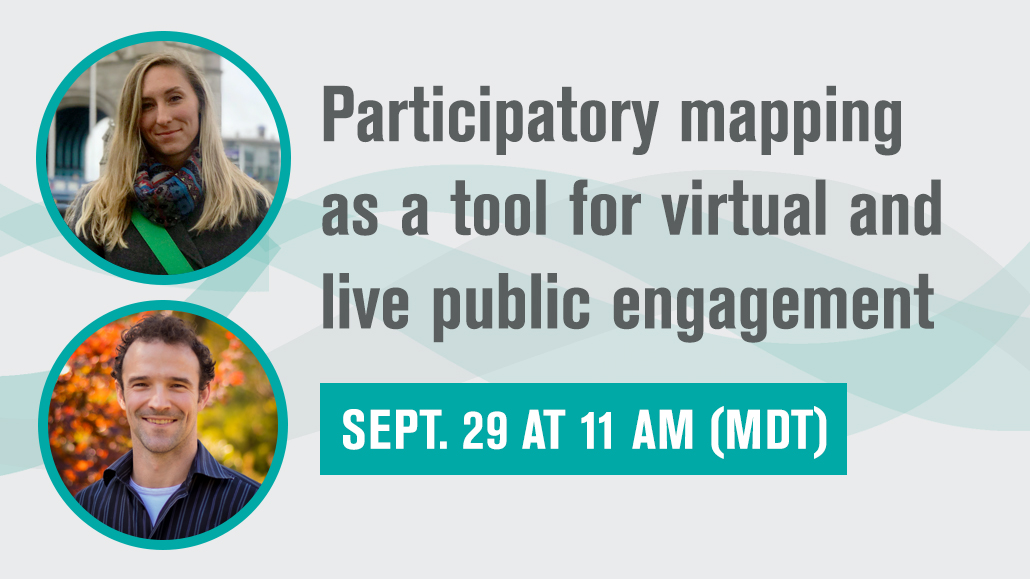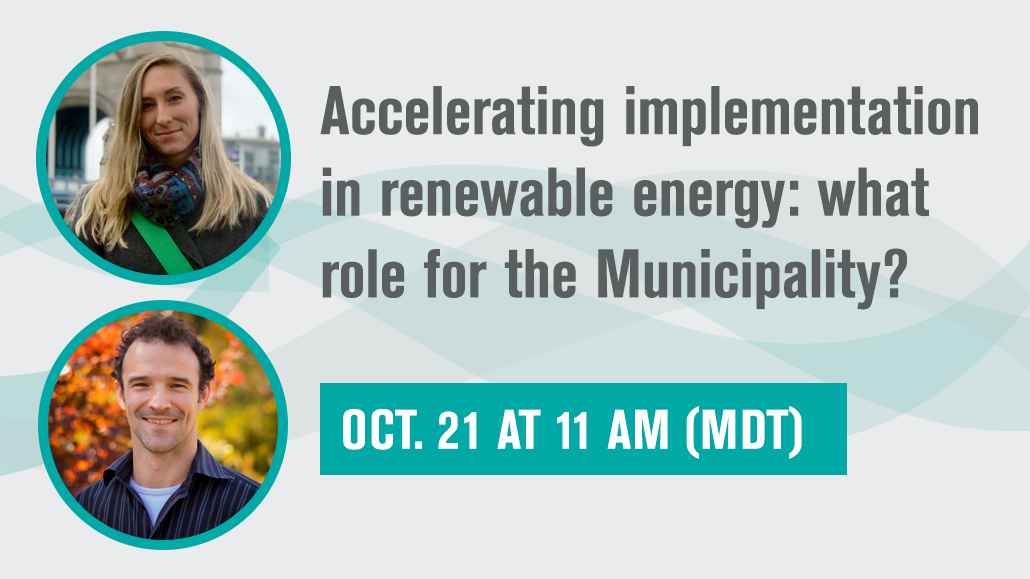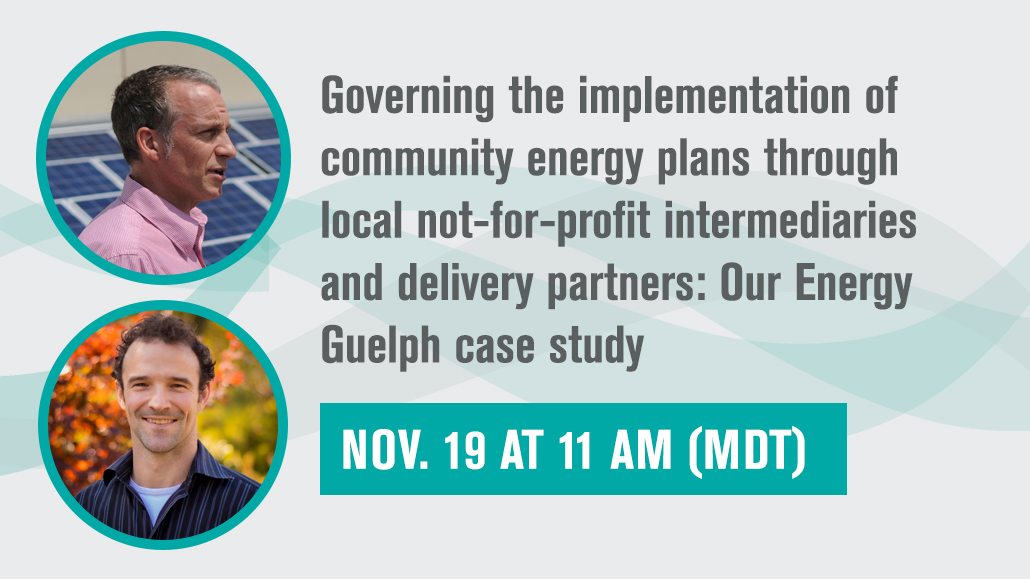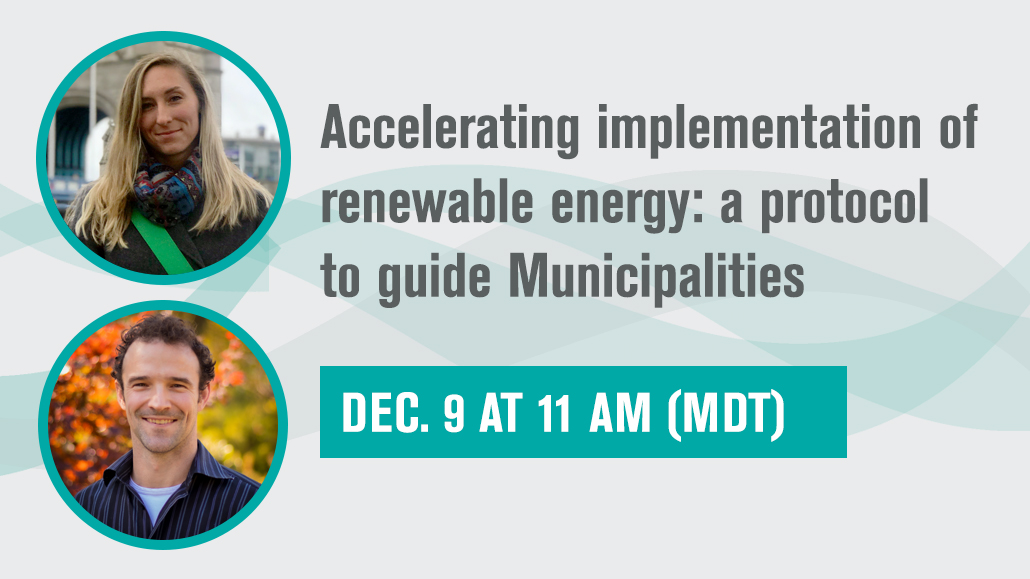Accelerating the Implementation of Renewable Energy Webinar Series
Les participants bénéficieront de techniques d’apprentissage pratiques, d’études de cas du monde réel sur l’utilisation des terres et d’autres outils politiques et techniques, ainsi que d’une boîte à outils de cartographie personnalisée pour évaluer et communiquer les opportunités de projets dans leurs communautés.
Ce projet est financé par la Fédération canadienne des municipalités (FCM). La subvention fait partie de Transition 2050, une initiative financée par le gouvernement du Canada et offerte dans le cadre du Programme des municipalités pour l'innovation climatique (PIMC) de la FCM.
This webinar series is presented in partnership with the Community Energy Knowledge Action Partnership (CEKAP) and the University of Guelph.
Part 1. Participatory mapping as a tool for virtual and live public engagement
This presentation shares key concepts and techniques through which to employ participatory mapping as part of community energy planning and implementation. The successful implementation of community energy plans requires a spatial perspective. In this presentation, it’s shown how participatory mapping can help decision-makers better understand the place-based opportunities for, and implications of, their community energy plans, as well as better understand public sentiment and stakeholder concerns related to those changes. Experiences gained using participatory mapping across five Canadian municipalities is presented as case studies and while the focus is on renewable energy development, dialogue beyond this use-case is encouraged.
Part 2. Accelerating implementation in renewable energy: what role for the Municipality?
This presentation discusses the (changing) role of the municipality in energy supply planning and system implementation. First, a critical reflection on the logic through which it is expected that a stronger role for local governments results in improved outcomes in renewable energy implementation. Simply stated, the logic rests on ideas about achieving institutional fit through decentralization and increasing institutional capacity through collaboration. From there, the second part of the presentation provides a typology of the various roles municipalities can play in helping to accelerate implementation of renewable energy. Finally, the preliminary results of a survey of implementation in three Canadian provinces is shared, to identify examples of these various roles and to highlight innovative mechanisms and collaborations.
Part 3. Governing the implementation of community energy plans through local not-for-profit intermediaries and delivery partners: Our Energy Guelph case study
This presentation describes the logic upon which local not-for-profit organizations – serving as intermediaries and delivery partners – can improve planning and implementation of community energy plans. The case of Our Energy Guelph, established in 2018, is used as a focal point to discuss the strengths, opportunities, weaknesses, and threats of this governance model and organization. The presentation is co-delivered by Kirby Calvert, Chair of Board of Directors at Our Energy Guelph, and Alex Chapman, Executive Director of Our Energy Guelph. This dual perspective helps to shed light on the political and the technical/logistical challenges and opportunities that other municipalities and communities should consider as they work toward a similar governance model.
Part 4. Accelerating implementation of renewable energy: a protocol to guide Municipalities
This presentation showcases a series of resources – compiled into a ‘protocol’ – that can increase capacity among municipalities to accelerate the implementation of renewable energy. Municipal Councils are setting ambitious climate change mitigation targets, in which local renewable energy development figures prominently. To date, municipalities have played a relatively small role in energy supply planning and implementation and, as a result, have relatively little experience or resources upon which to move toward implementation. Our protocol is designed to help fill this capacity gap. It brings together information about best practices from across Canada, combined with novel concepts and techniques in spatial planning and community engagement.




